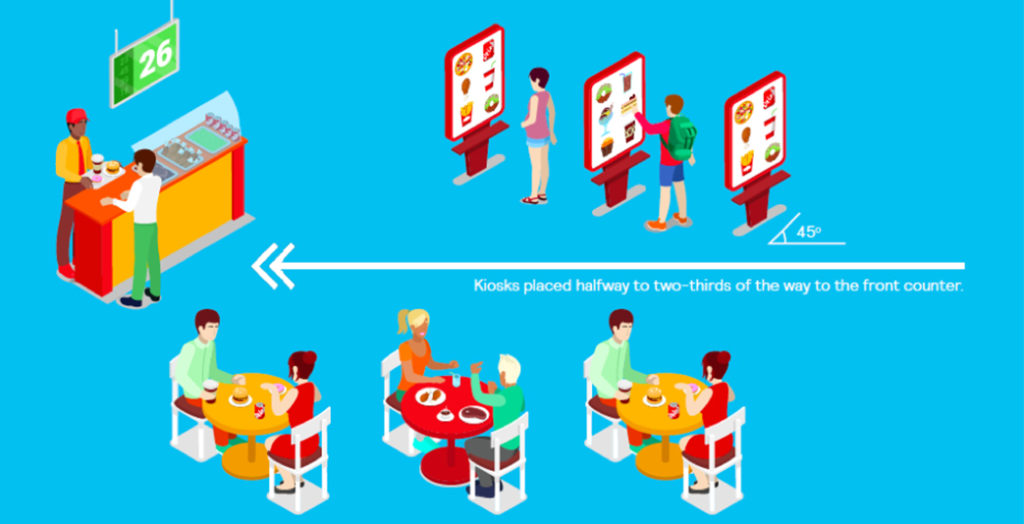[vc_row][vc_column][vc_column_text]Opting for kiosk hardware that is cheap or incorrectly sized can affect the success of your restaurant digital strategy. Kiosk positioning is just as important, as re-location can result in floors being ripped up and wires needing re-routed. Keep disruption to a minimum and avoid any costly mistakes by making sure you’ve covered off the basics:
How to choose the right kiosk hardware
Ruggedized
Make sure your kiosks are truly ruggedized to your restaurants’ unforgiving environments. Smoke, liquid spills, being climbed on by kids and continual wear and tear from the general public mean if your kiosks are to go the distance, they need to be made for purpose and fully ruggedized.
Single vs. double-sided kiosks
Have you considered single or double-sided kiosks? Double-sided kiosks are more cost effective as they involve lower associated shipping costs and are overall cheaper to install. Two double-sided kiosks (four screens) save up to 40% compared to single-sided kiosks, offering a much better ROI.
Screen size
There is some evidence to suggest that larger screen sizes can lead to an increase in check values up to a point. Screens sized 32”-36” are optimal – any larger and the customer may have trouble reaching. As screens get smaller, the font size and information you can fit on the screen gets smaller and less impactful. It is advised you don’t go for screens smaller than 21”.
In-store infrastructure
Make sure your stores have the right infrastructure to support kiosks. For example, does work need to be carried out beforehand to put in the right communications, Wi-Fi, hardwired internet or power cables? Be sure this work is factored in well in advance as you will need to consider the impact on daily operations of the store.
How to ensure your kiosk placement will compliment customer flow
Kiosks are beacons in their own right. Due to their size, they will automatically attract customer attention. They should be placed in a prominent position, in the customer’s line of sight as soon as they enter the store. This positioning also helps to draw customers into the store.
The kiosks should be visible to customers queuing at the counter. This is because customers using the kiosks can act as potential trainers for those queuing at the counter. Although guests at the front desk can’t see what the customer at the kiosk is ordering they can observe them as they swipe screens and browse items, which reduces their apprehension about using them.
In large premises, the kiosks should ideally be positioned halfway to two thirds of the way to the front counter, when measured from the front door and along the main walkway to the counter. A minimum of two metres of queuing space should be left in front of the kiosk if possible but this depends on store layout.
The optimum angle of the kiosks is 45 degrees, angled towards the customer’s direction of walking. If the kiosks are flat-to-the-wall, the customers might think they’re advertising boards.

There might be times where it is worthwhile removing a table from a restaurant to get the kiosks in the best possible position. Franchisees might be reluctant to do this but once there are demonstrable increases in sales, the logic is understood and it makes it easier to repeat in other stores.
Hardware selection and store location are just two elements you need to get right to ensure a successful kiosk deployment across your restaurants. Find out how to ace all other elements of your kiosk digital strategy – from company buy-in, to scenario planning, to marketing, and retaining post-launch momentum in our free Secrets of Self-Service Success eBook.[/vc_column_text][vc_separator color=”white”][/vc_column][/vc_row]




